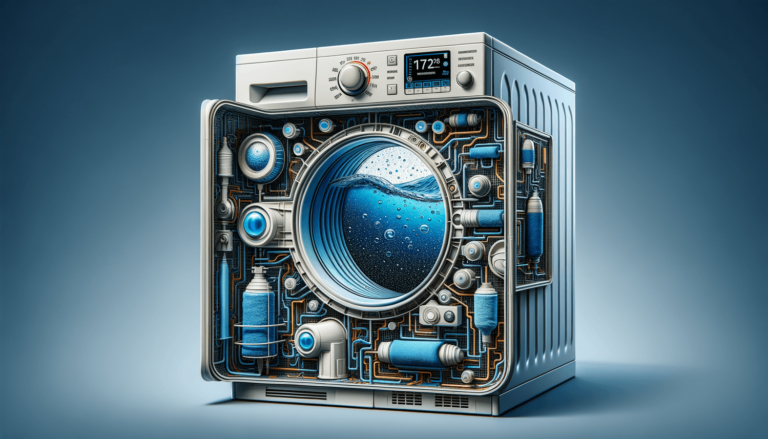

A dryer’s moisture sensor works by detecting the humidity level within the dryer drum using metal bars or strips. When moisture levels reduce, indicating that clothes are dry, the sensor communicates with the machine’s control panel to end the cycle, improving energy efficiency and preventing over-drying.
Moisture sensors play a crucial role in conserving energy and extending the life of your garments by effectively adjusting the drying time. By utilizing such technology, dryers can effectively reduce the risk of over-drying and shrinkage, making them more economical and environmentally friendly.
Modern dryers come with a variety of dryer settings, including those specifically designed to work with moisture sensors. Some common settings that make use of moisture sensors include:
This setting automatically detects the humidity level inside the dryer and adjusts the drying time accordingly, ensuring optimal results without overdrying.
Delicate cycles often feature gentler heat levels and rely on moisture sensors to carefully dry your sensitive garments without causing damage.
At Settings King, a blog about technology settings, we highly recommend using dryer settings that incorporate moisture sensors. These settings not only save energy but also protect your clothes from potential damage due to over-drying. By taking advantage of a dryer’s moisture sensor technology, you can achieve efficient and eco-friendly drying without sacrificing the quality of your garments.
There are two primary types of moisture sensors found in dryers:
Capacitive moisture sensors measure the change in capacitance, caused by varying moisture levels in clothes. The drum surface acts as an electrode to detect moisture-related capacitance variations, providing accurate and responsive readings of humidity levels.
Resistive moisture sensors track the resistance between two electrodes, placed within the dryer drum. As the clothes come in contact with the electrodes, the electrical resistance varies with the moisture content, allowing the sensor to monitor humidity levels efficiently.
Proper maintenance of the moisture sensor is essential for consistently accurate results and improved energy efficiency. Here are some maintenance tips:
Regular cleaning of the moisture sensor ensures effective detection. Fabric softener sheets may leave a residue on the sensor, affecting its performance. Wipe the sensor with a soft cloth and rubbing alcohol to remove any build-up.
Loose or damaged wiring can result in the moisture sensor malfunctioning. If you suspect issues with your dryer’s sensor, it’s essential to check and repair any wiring problems to keep the sensor functioning optimally.
If your current dryer lacks a moisture sensor, consider upgrading to a newer, more energy-efficient model. Modern dryers with moisture sensors can save you money on utility bills, protect your clothes, and help the environment.
At Settings King, a blog about technology settings, we are dedicated to helping you find the perfect balance between cost, performance, and usability. When purchasing a new dryer, keep an eye out for models that emphasize moisture sensing technology for improved performance and energy efficiency.
In this section, we will address some common questions related to dryer moisture sensors and their operation.
Using a dryer with a moisture sensor offers multiple benefits, including improved energy efficiency, preventing over-drying, reducing wear and tear on clothes, and lowering utility bills. These sensors help create a more eco-friendly laundry routine while maintaining garment quality.
Not all dryers have moisture sensors. However, most modern dryers, especially energy-efficient models, come equipped with these sensors. When purchasing a new dryer, always check the product specifications to confirm the presence of a moisture sensor.
To determine if your dryer has a moisture sensor, you can check the user manual or look for sensor-related settings on the control panel. Additionally, the sensor itself, typically appearing as metal bars or strips, can often be visible inside the dryer drum.
Adding a moisture sensor to an existing dryer is not typically a straightforward process, as it involves modifying the dryer’s electrical and control systems. It’s more practical to consider upgrading to a newer dryer model with built-in moisture sensing technology.
The frequency of cleaning your dryer’s moisture sensor depends on your dryer usage. Generally, it’s a good practice to clean the sensor every few months or when you notice a decrease in drying efficiency, which may indicate residue buildup on the sensor.